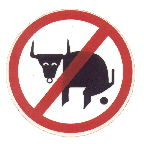Restriction Requirements on the Rise?
Posted by Stephen M. Nipper at February 13, 2007 12:53 PM
I try not to rant here too often, but seeing posts on the allowance rate dropping (within a few years) from 70+% to ~50% and questions regarding whether there has been a secret change to official USPTO policy regarding examination and allowance makes me say “hmm…..”
One thing I’ve been noticing is that the number of restriction requirements appears to be on the rise.
I don’t mind restriction requirements that are appropriate…there is a reason for them. But, I have to admit, I’m having a hard time believing some of the reasons I’ve been seeing recently. For instance, the one I received earlier this week…the entire support for the rejection? “The species are distinct because each of them has a distinct feature.” No reasons provided. No examples to support conclusions. Just a blanket statement that (essentially) the embodiments each have a distinct feature and thus they must be patentably distinct species. Argh.
Is it just me??? Anyone else seeing more restriction requirements than they used to? The comments are open.
Odd new USPTO domain
Posted by Stephen M. Nipper at February 7, 2007 12:00 PM
Anyone have an idea what’s up with the http://des.uspto.gov page? If you click on that link, you get this page:
It also appears that there is an OED page: http://des.uspto.gov/OEDCI/query.jsp and IP Newsflash’s links to BPAI decisions use a des.uspto.gov domain (with an interesting FOIA (Freedom of Information Act) subfolder) (i.e., http://des.uspto.gov/Foia/ReterivePdf?flNm=fd10548102-07-2007.pdf)
Perhaps this is part of the open application/peer review project? [the comments are open]
"if you're against software patents, you're against patents in general..."
Posted by Stephen M. Nipper at April 6, 2006 03:07 AM
Put this on your "to read" list: Are Software Patents Evil? by Paul Graham
This is, by far, the best essay I have ever read on software patents and patent trolls. While you/I may not agree with every point he makes, he does an excellent job of explaining the issues and arguing his points. Well worth the read.
He does say one thing that makes me twitch funny: "We tell the startups we fund not to worry about infringing patents, because startups rarely get sued for patent infringement." Yikes...not the kind of statement I want quoted against me in a deposition. ;)
I also encourage you to read two of his other essays: How to Start a Startup and How to Fund a Startup.
Whats Your Definition of a Rainmaker? Bullshitter?
Posted by Douglas Sorocco at November 24, 2005 12:02 PM
 I really hope that the young associate who writes the BigLaw Associate is real and not some pseudo-writing experiment like Anonymous Lawyer. The posts over at BigLaw crack me up and hopefully offer some unintentional glimpses into some biglaw practices.
I really hope that the young associate who writes the BigLaw Associate is real and not some pseudo-writing experiment like Anonymous Lawyer. The posts over at BigLaw crack me up and hopefully offer some unintentional glimpses into some biglaw practices.
For example, BigLaw’s newest post is entitled “A New Plan” and is the most recent in a series of angst ridden posts dealing with whether he/she/it/they should leave the biglaw firm where they are currently employed.
The whole post is interesting for the fact that he/she/it/they have finally succombed to the fact that they will never leave biglaw and he/she/it/they are justifying the reason for not leaving (although, look back a few posts for what I believe are the real reasons – money, awe from peers, and “biglaw prestige”)
What I found most striking in the post is this statement regarding the senior attorney she is assigned to:
… I have come to the conclusion that perhaps my problem is not the Firm, but Senior (and myself to a large extent). We have a totally dysfunctional working relationship. Senior is a rainmaker and knows how to keep his clients happy; not so much with quality work (although he is undeniably VERY smart), as with backslapping, belly laughing locker room humour.
What? Say again? Hello?
Yikes!
I don’t think my definition of rainmaker would/should/could be modified with the statement “not so much [because] of quality work”… I wonder if their clients feel the same way.
Where I come from (all at once … “Oooooooook – la – homa, where the wind comes sweeping down the plain….” [MP3]), modifying the term rainmaker in such a manner results in that person simply being a bullshitter – someone with a good handshake but nothing of any worth to the client.
Is this the definition of rainmaker that biglaw is teaching its associates and, if so, is it any wonder why clients are demanding change in how legal services are to be delivered? What happened to client service, attention to detail, quality work and delivery of innovative, helpful and useful counsel?
If this is the trend – maybe instead of Chief Marketing Officers at biglaw, they should just hire Chief Bullshitters. It would certainly be easier for recruiters to find them — you don’t really need any particular qualifications and if it is big enough of a trend, some enterprising CLE provider will start teaching “Chief Bullshitter Bootcamps” for the forward thinking law office.
I really hope BigLaw Associate is for real… it bodes well for us “little guys”, I think.
Buckets with holes in them.
Posted by Douglas Sorocco at June 16, 2005 01:30 PM
I ran across a great quote the other day:
Fix the holes in the bucket first, and then worry about how to add more water!
The reason I like the quote is that it made me think. I literally stopped and spent some time thinking about the quote and how it applied to my practice and intellectual property law in general.
Does anyone ever fix the bucket first? I don’t think so.
A couple of examples:
-
Patent reform: no one is talking about improving the quality, consistency, training and working conditions at the patent office.
-
IP practice: most attorneys don’t work to strengthen their existing client relationships, they look for the next bigger, better client – that next notch on their belt.
-
IP portfolios: most companies don’t look at their portfolios with an eye toward plugging holes or covering the white space – most don’t align their IP with their business plan.
I am sure there are others, but these are the main ones that immediately hit me.
What “holes” do y’all see out there?
Patent rankings: The numbers game v. patent quality
Posted by J Matthew Buchanan at April 20, 2005 10:51 AM
Every year, several lists are published that purport to rank various types of organizations on some type of innovation scale. The lists provide great headline material (“Top ten universities announced;” “Most innovative companies named,” etc.), but not much else. It seems there’s a list for every type of entity (see, for example, these lists for businesses, universities, states, law firms) and the media, including the popular media, gobbles them up, year, after year, after year.
Unfortunately, these lists boil down to nothing more than a numbers game. Here’s the basic formula for all numbers-based lists:
1. Count the number of patents granted to an organization in a given year
2. Rank the organizations in a particular group (universities, companies, law firms, etc) based on the numbers.
Many people blindly believe that, in the patent world, more is better. This includes many business people (ever look at an annual report of a publicly-traded innovation-based company? Some business folks are very proud of their “patent numbers”). Unfortunately, the numbers game is contributing to the quality problem. Many believe that organizations playing the numbers game are primarily responsible for the perceived drop in patent quality of late.
An interesting aside: How’s this for irony…in a recent call for reform of the US system, IBM Vice President of Technology and Strategy Irving Wladawsky-Berger, whose company sits atop the USPTO patent rankings year after year, stated flatly that “any idiot can get a patent for something that should never be granted a patent.”
Numbers-based rankings do nothing but feed the numbers game monster (well, ok, there is the “catchy headline” thing…).
Here’s a seemingly simple rethink: If patents are to be used as a measure of innovation, shouldn’t patent quality be the primary focus?
I’ve been trying to rethink this one for awhile. Turns out, its not so simple. How do you rate patent quality? Does it require a detailed analysis of each and every claim from each and every patent? To be accurate, does it require perfect knowledge of the prior art? Does it require a full legal analysis of validity and scope?
My rethinking led me to conclude that the determination of a quality score is a difficult task. No matter how its determined, though, a quality score should be a reflection of the scope of a claim or claims relative to the invention and the applicable prior art. Considering this, its easy to see why the simple two-step formula of the numbers game is so popular. Its easy! Determining quality is hard (and likely very expensive)!
I don’t know what the solution is. But, I do believe that we, as patent professionals, need to downplay the importance of the numbers game and stress the importance of quality over quantity. So, the next time you read one of those catchy headlines, take it with a single grain of salt.
Another aside: I am aware of at least one system that purports to use a quality-based analysis: the Intellectual Property Quotient (IPQ) system of PatentRatings LLC. I have no experience with the IPQ system and would love to hear from anyone who does.




 J. Matthew Buchanan
J. Matthew Buchanan  Stephen M. Nipper
Stephen M. Nipper  Douglas Sorocco
Douglas Sorocco 